Vision and eye health information for children, parents and caregivers
Instruction
In this topic you will learn important vision and eye health information to share with children, parents and caregivers.
Question
What are some common causes of vision and eye health problems in babies and young children?
Select two.
If you selected b and c you are correct!
If you did not select the correct answers you may like to revisit the Primary eye care screening module to review common causes of vision and eye health problems in children.
Five top vision and eye health tips for children, parents and caregivers
Five simple messages you can share with children, parents and caregivers are:
- Immunization can protect a child’s vision and eye health
- Good nutrition supports vision and eye health
- Spend time outdoors every day
- Wear spectacles correctly
- Know the signs of vision problems in children.
Discussion
How could you share vision and eye health messages in a child-friendly way when working with children?
Discuss with your colleagues.
Sharing eye health messages in a child-friendly way may include:
- Using age-appropriate resources such as pictures, stories, or toys, to explain your message
- Turning the message into a game or song.
Immunization can protect a child’s vision and eye health
- Ensuring a child is fully immunized can save their life and their vision
- Make sure babies receive all the recommended vaccines on time, starting from birth. This will protect them from measles, rubella, tetanus and other illnesses, which can cause serious eye health problems or blindness in babies
- Vaccines are safe and effective.
Warning
Always advise parents or caregivers to visit a health professional immediately if their child has a known allergy or experiences an unexpected or severe reaction after an immunization.
Remember, you should only provide immunizations if you are qualified to do so.
Discussion
Do you provide immunizations in your role?
If not, where could you refer children for immunizations in your local area?
Discuss with your colleagues.
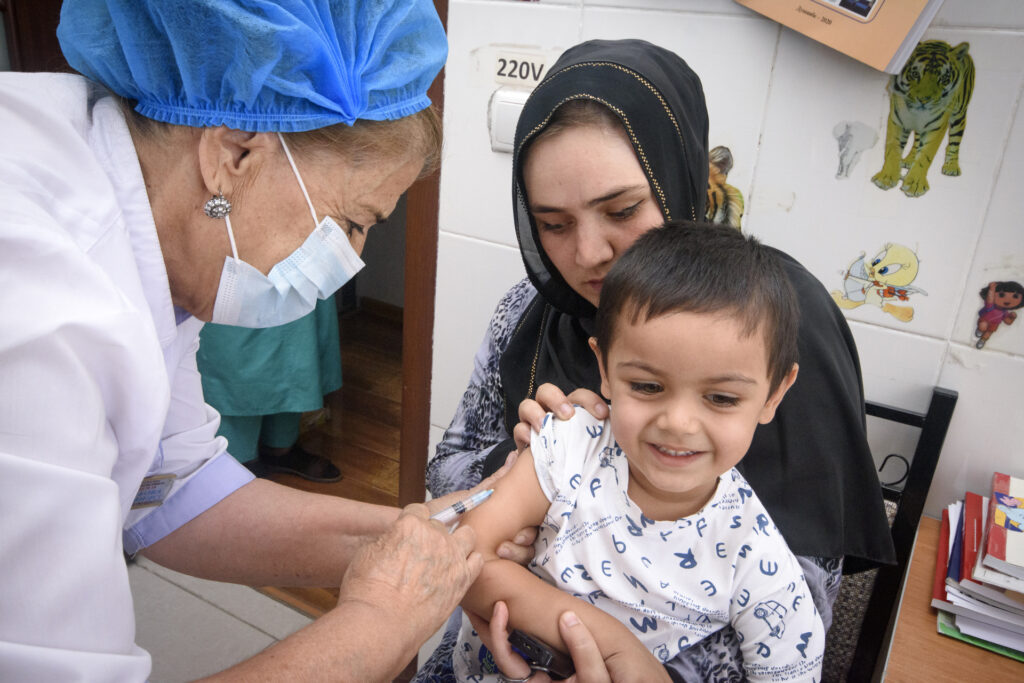
Photo credit: © WHO/Nozim Kalandarov
Good nutrition supports vision and eye health
Good nutrition can lower a child’s chance of getting illnesses that can cause blindness, for example:
- Diarrhoea
- Measles
- Low vitamin A.
This is especially important in young babies.
Good nutrition can involve:
Breastfeeding
- This is the best way to nourish a baby and protect them from infections that can harm their eyes
- If possible, babies should be breastfed as soon as possible after birth until they are at least two years old
- Exclusive breastfeeding for the first six months of life can lower a baby’s risk of diarrhoea, measles, vitamin A deficiency and other illnesses that can cause blindness.
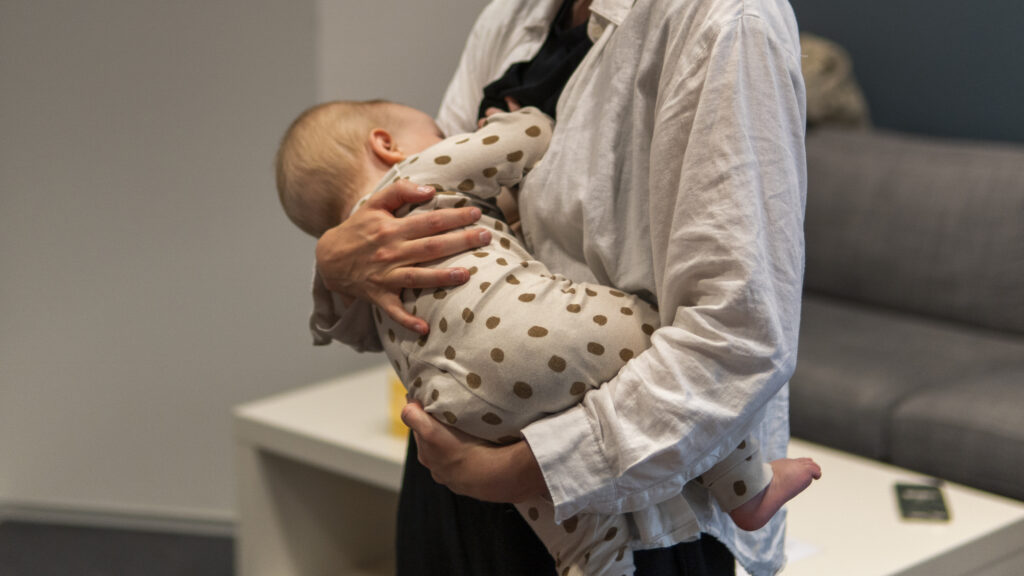
Photo credit: © WHO/Uka Borregaard
Vitamin A supplementation
- Vitamin A is essential for a baby’s eye health. Low vitamin A can cause vision and eye health problems and even blindness
- Babies are commonly given two doses of vitamin A at six and nine months old to prevent vision and eye health problems. This should only be done by a health professional following local guidelines on providing vitamin A
- Vitamin A supplements can also protect a baby against problems caused by measles. If a baby is showing signs of measles or prolonged diarrhoea, they should have a full health assessment to check for low vitamin A.
Warning
The information in this topic is general advice only. You should only provide medication if you are qualified to do so and always follow local guidelines.
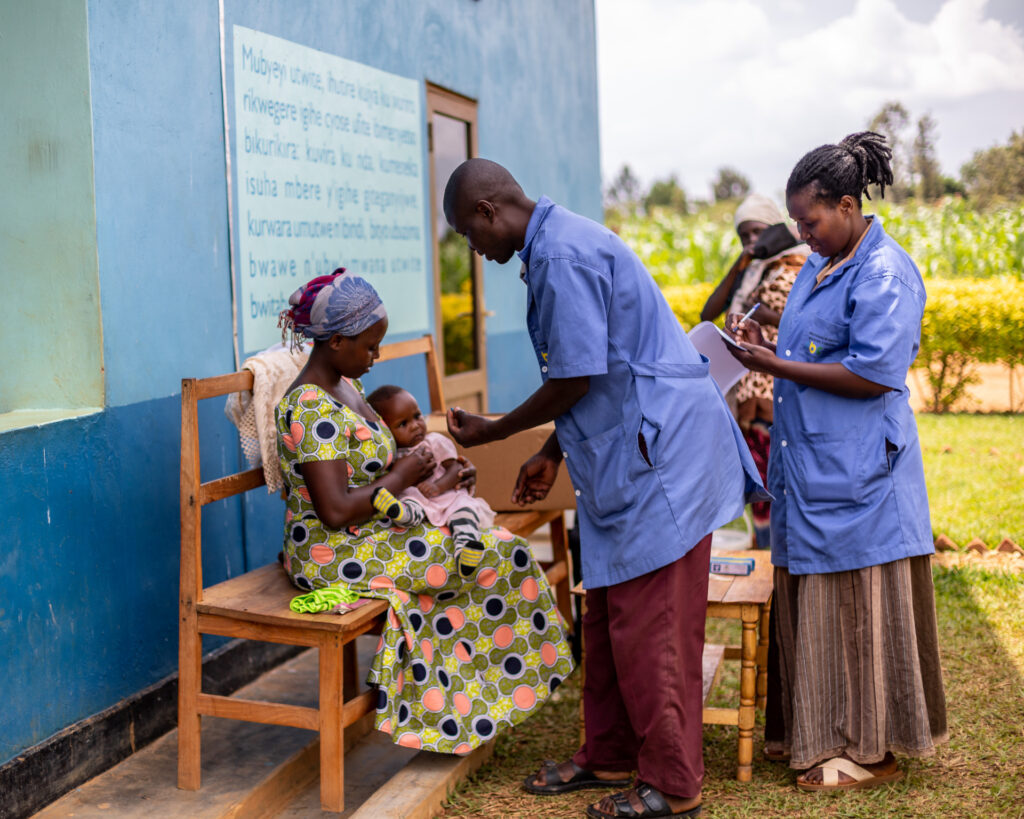
Photo credit: © WHO/ Isaac Rudakubana
Spend time outdoors every day
- Spending long periods of time indoors increases a child’s chance of developing distance vision problems (myopia)
- Children who spend a lot of time doing near-vision activities are also more likely to develop distance vision problems
- Encourage children to spend at least 90 minutes outdoors in daylight every day to protect their distance vision.
Question
What are some common near vision activities that a child may do?
Select two.
If you selected b and d you are correct!
If you did not select the correct answers you may like to revisit the Primary eye care screening module to review the difference between distance and near vision.
Meet Ionita
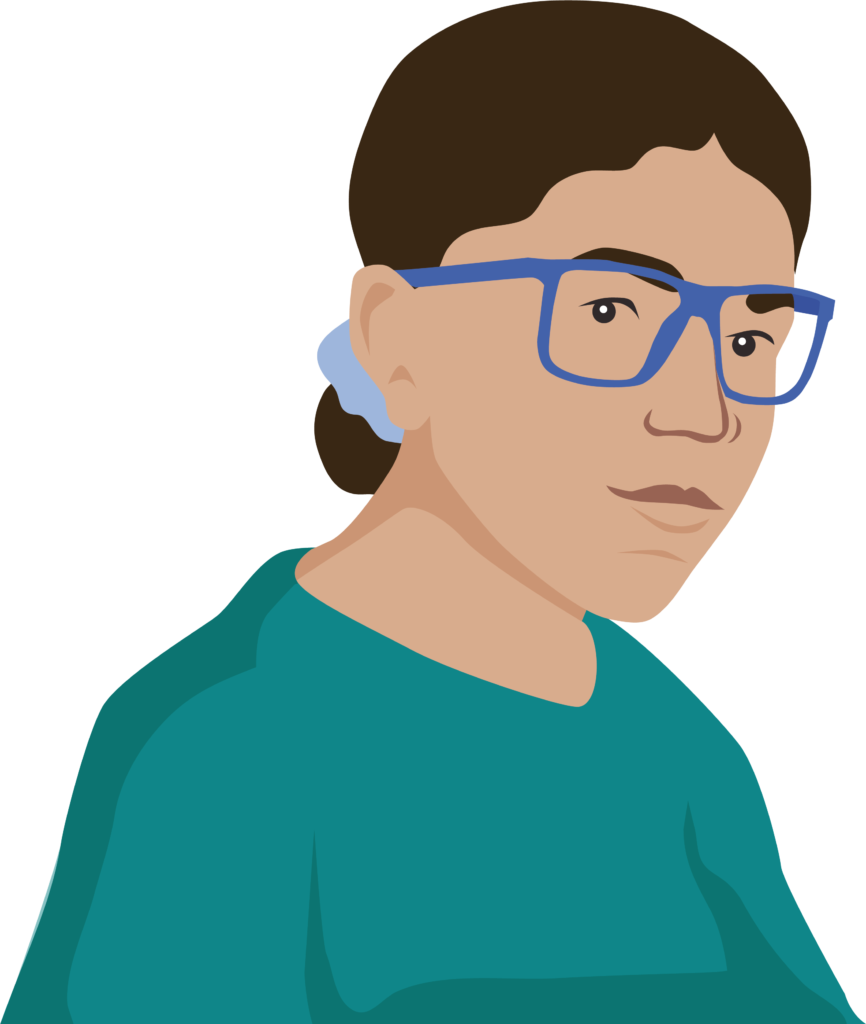
Ionita is a teenager. She uses spectacles for a distance vision problem.
When Ionita was younger, she liked to read a lot and did not spend much time playing outdoors.
She developed vision problems when she was seven years old. When she was given spectacles, her eye health professional also encouraged her to spend time outdoors every day to slow the progression of her vision problem.
Wear spectacles correctly
If a child uses spectacles, they should wear them as instructed by their eye health professional.
However, negative stereotypes and social stigma can discourage people, especially children, from wearing spectacles even when needed.
Common perceptions and concerns include:
- People think wearing glasses makes them look less attractive
- Some worry about being teased or bullied for wearing spectacles
- There is a misconception that wearing glasses can make eyesight worse over time.
These perceptions and concerns can discourage children from wearing spectacles and impact eye health and learning outcomes.
Discussion
What are some ways you could encourage children to wear spectacles correctly?
Discuss with your colleagues.
Encouraging children to wear spectacles correctly will help to protect the child’s eyes and prevent future vision and eye health problems.
It will also help them to learn at home and school, and to be independent in daily activities.
Children should only wear spectacles that were prescribed for them. They should not share spectacles with others.
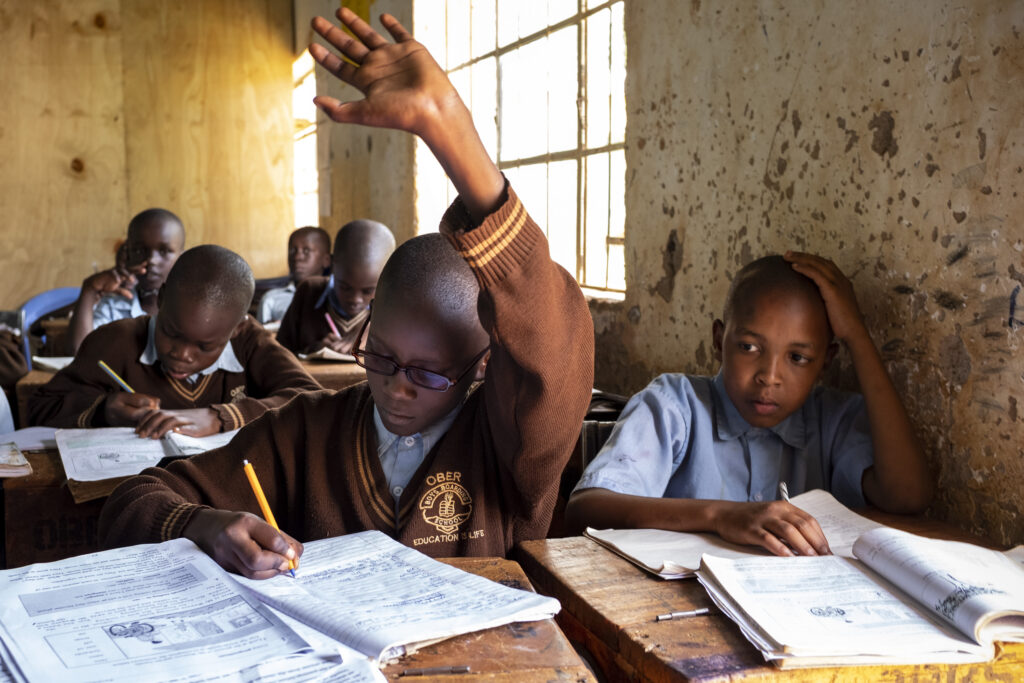
Photo credit: © WHO
Know the signs of vision problems in children
Parents, caregivers or teachers can monitor a child’s vision by looking out for the following signs. The child:
- Holds their head in a way that indicates they have a strong preference to look with one eye only
- Bumps into objects on one side
- Moves closer to see objects
- Avoids near vision activities
- Doesn’t make eye contact
- Has difficulty seeing the classroom board or has learning difficulties at school. This may result in disruptive behaviour or issues participating in school activities
- Isolates themselves from other children because they do not see well enough to participate in activities
- Complains of sore eyes, headaches or rubs their eyes often.
Vision problems can begin anytime as a child grows. Sometimes there are no obvious signs of the vision problem.
If a parent, caregiver or teacher notices any signs of vision problems or has any other concerns, the child should have a vision and eye health screen.
Meet Alitia
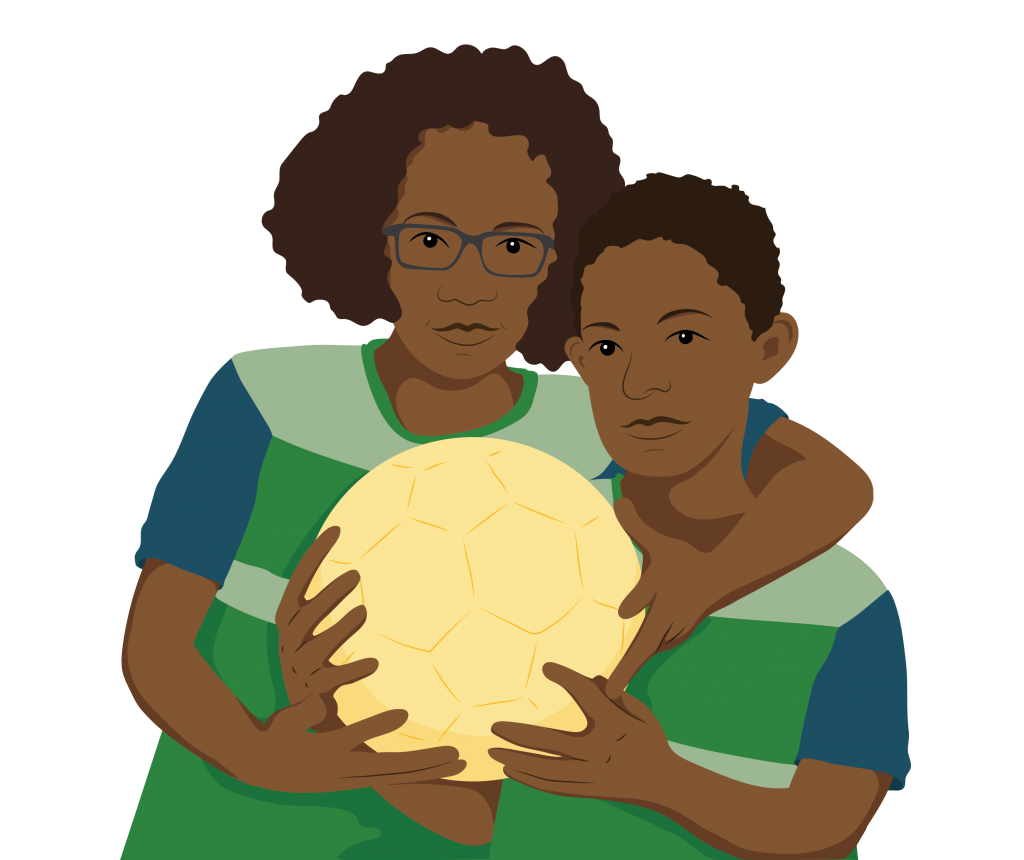
Alitia enjoys school and playing soccer with her friends. Her teacher noticed that she was finding it difficult to see what was written on the classroom board and was losing confidence.
Alitia had an appointment with the local eye health professional. They found that she is short-sighted, and she was prescribed spectacles. Alitia’s confidence has returned, and she is doing well at school.

